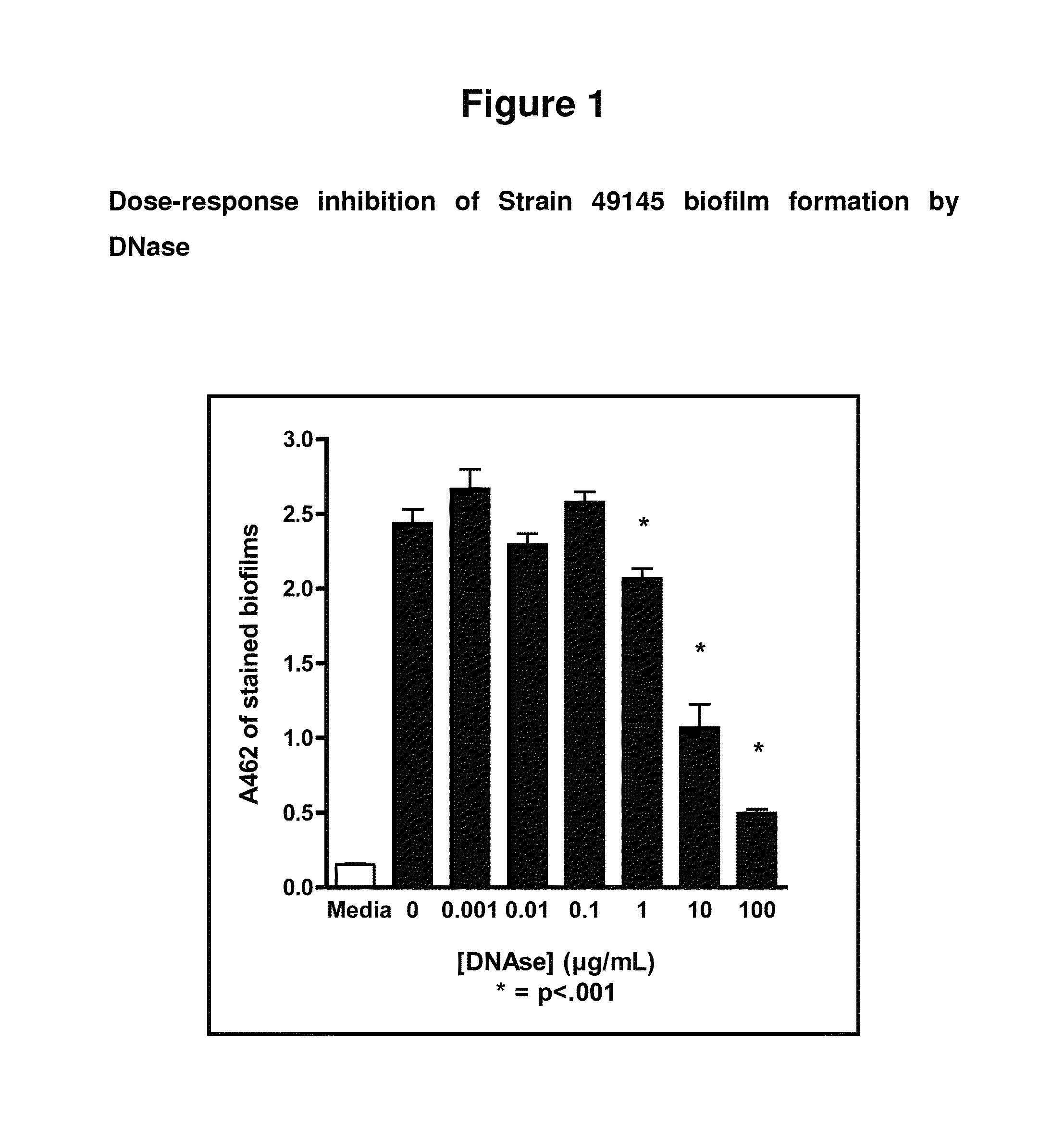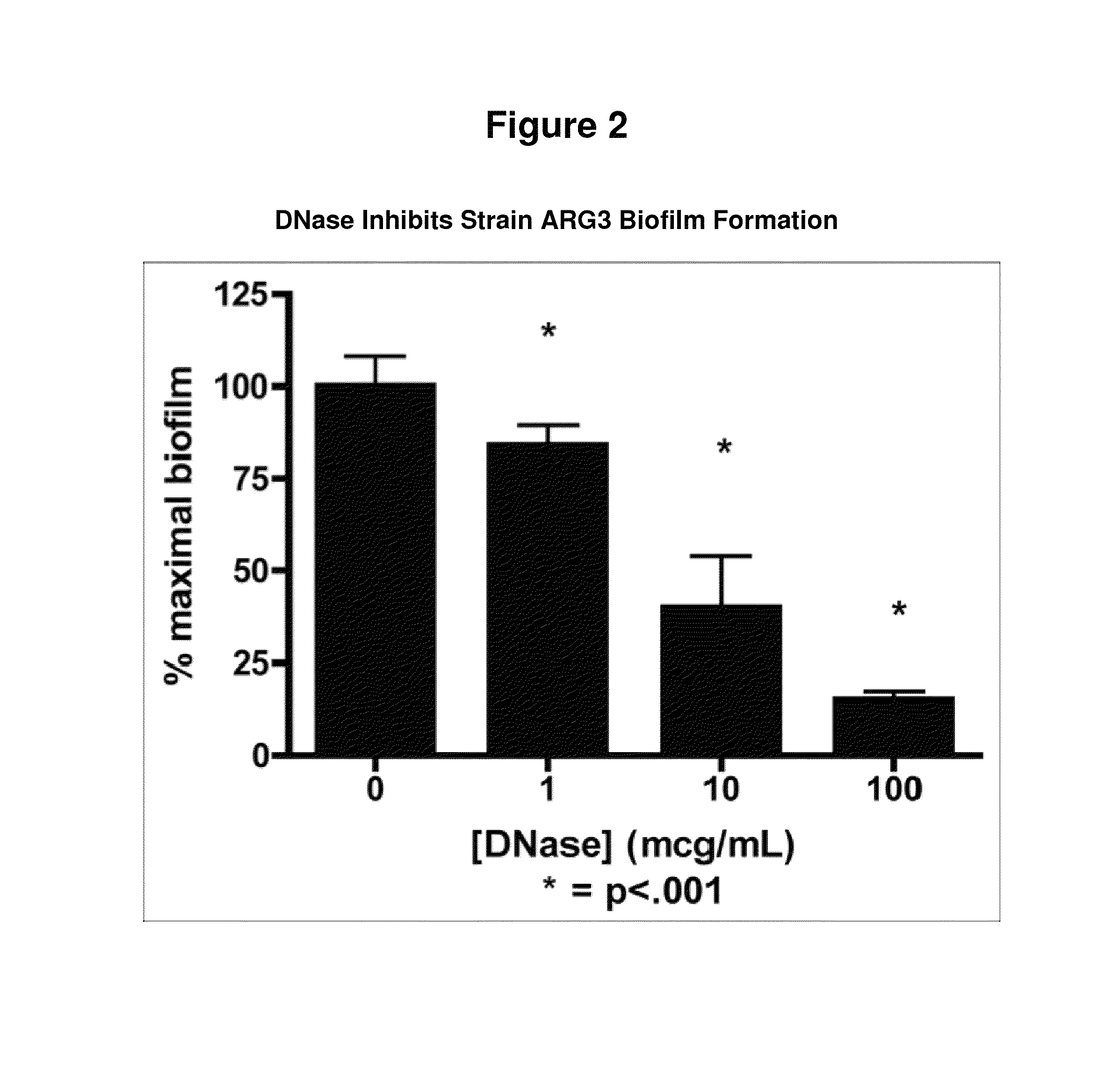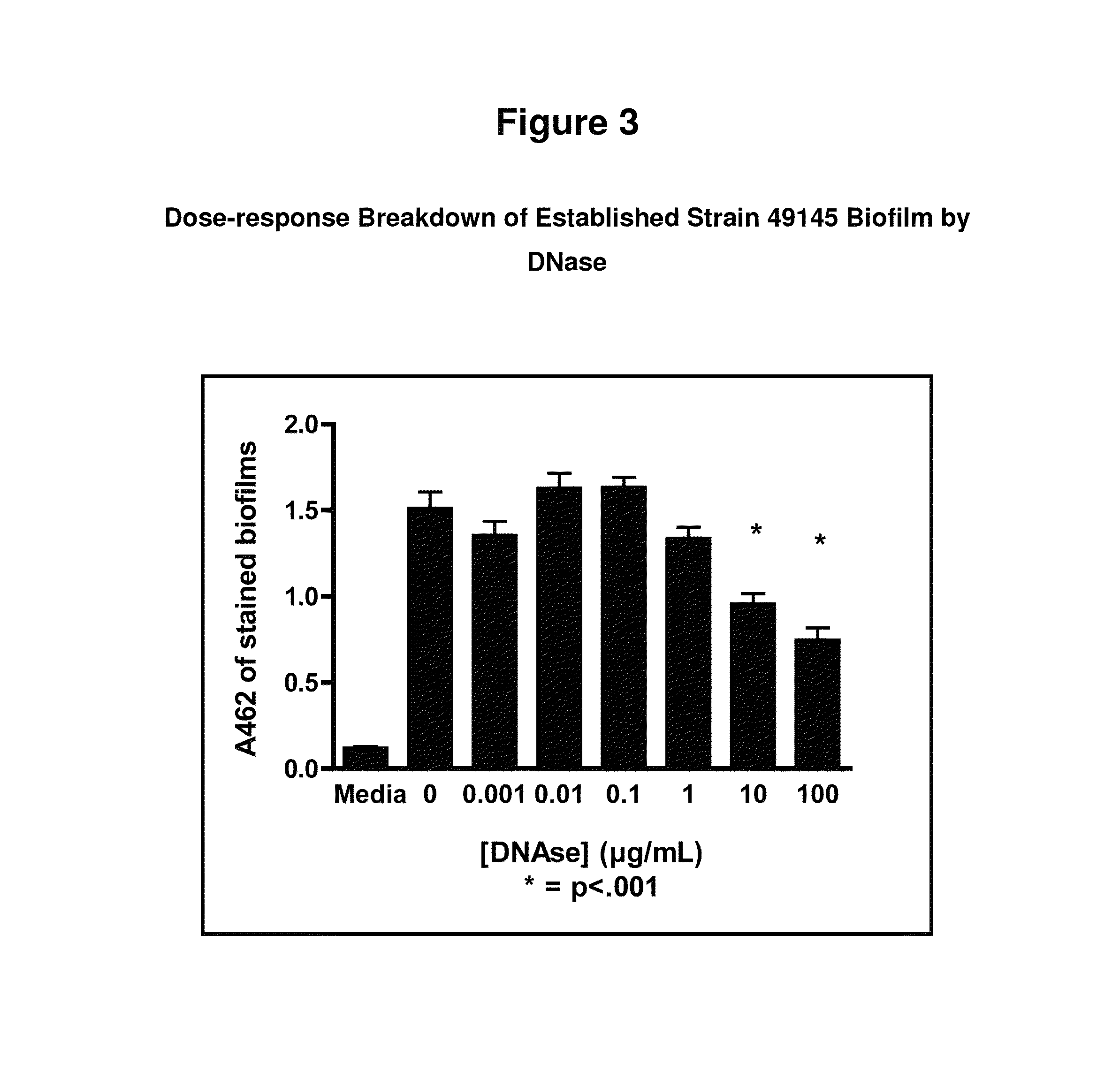Treatment and prevention of bacterial vaginosis and Gardnerella vaginalis infections
a technology of gardnerella vaginalis and bacterial vaginosis, which is applied in the field of treatment and prevention of bacterial vaginosis and i>gardnerella vaginalis /i>infections, can solve the problems of neonatal death and maternal death, and achieve the effects of reducing biofilm formation, reducing biofilm formation, and increasing biofilm breakdown
- Summary
- Abstract
- Description
- Claims
- Application Information
AI Technical Summary
Benefits of technology
Problems solved by technology
Method used
Image
Examples
example 1
Addition of DNase
[0104]The results depicted in FIG. 1 show the dose-response inhibition of Gardnerella biofilm formation by bovine pancreatic DNase that was administered (time=0 hours) as assessed by measuring the absorbance of light at 462 nm (A462). A dramatic reduction in the extent of biofilm formation can be seen with DNase applied at 10 μg / ml and 100 μg / ml.
[0105]The results depicted in FIG. 2 show the dose-response inhibition of Gardnerella strain ARG3 biofilm formation by bovine pancreatic DNase that was administered (time=0 hours) as assessed by measuring the % biofilm density (y axis). Again, a dramatic reduction in the extent of biofilms formation can be seen with DNase applied at 10 μg / ml and 100 μg / ml. Accompanying the reduction in biofilm formation is a parallel dose-dependent breakdown of established Gardnerella strain 49145 and ARG3 biofilms by DNase administered at t=24 hours. FIGS. 3 and 4 respectively.
[0106]The results depicted in FIG. 17 show the dose-response inh...
example 2
Combined Administration of DNase and Antibiotics
[0108]Further experiments were conducted to assess whether there is an improved effect on biofilm formation and breakdown by the combined administration of DNase and antibiotics against Gardnerella. The y axis plots the % of biofilm absorbance A462 for each condition. Biofilms were grown and measured as above with the addition of varying concentrations of metronidazole and clindamycin and DNase as indicated below. The minimum inhibitory concentration (MIC) for the antibiotics was measured by E-testing the relevant strains. Colony counts were performed on both the supernatant and the biofilm components of the culture, and a one-way ANOVA with Bonferroni post-tests were performed using Prism (Graphpad) where DNase was administered at time=24 hours. Fluorescence microscopy demonstrated a decrease in the biofilm matrix and in overall density in DNase-treated biofilms.
[0109]In addition, heat-inactivated DNase did not inhibit the formation o...
example 3
Liberation of Bacteria into Supernatant
[0114]Other in vitro experiments have been conducted showing that treatment with DNase does not reduce the number of bacteria in the biofilm cultures overall. In other words DNase does not kill the bacteria. However, DNase does cause the bacteria embedded in the ATCC Gardnerella strain 49145 biofilms to be released into the supernatant. FIGS. 13-15. Thus, while the reductive effect on biofilm formation of G. vaginalis strain 49145 is equivalent between treatment with 100 μg / mL of DNase alone and the combination of 1 μg / mL of DNase+16 μg / mL of metronidazole, the overall effect on bacterial killing is very different: DNase does not kill the bacteria and bacteria are killed by the antibiotic in the combination treatment. As more DNase is added to a Gardnerella biofilm, increasing numbers of living bacteria are liberated from the biofilm into the media above them. It is these released bacteria that are then able to be killed by the added antibiotic...
PUM
| Property | Measurement | Unit |
|---|---|---|
| concentrations | aaaaa | aaaaa |
| concentrations | aaaaa | aaaaa |
| concentrations | aaaaa | aaaaa |
Abstract
Description
Claims
Application Information
 Login to View More
Login to View More - R&D
- Intellectual Property
- Life Sciences
- Materials
- Tech Scout
- Unparalleled Data Quality
- Higher Quality Content
- 60% Fewer Hallucinations
Browse by: Latest US Patents, China's latest patents, Technical Efficacy Thesaurus, Application Domain, Technology Topic, Popular Technical Reports.
© 2025 PatSnap. All rights reserved.Legal|Privacy policy|Modern Slavery Act Transparency Statement|Sitemap|About US| Contact US: help@patsnap.com



